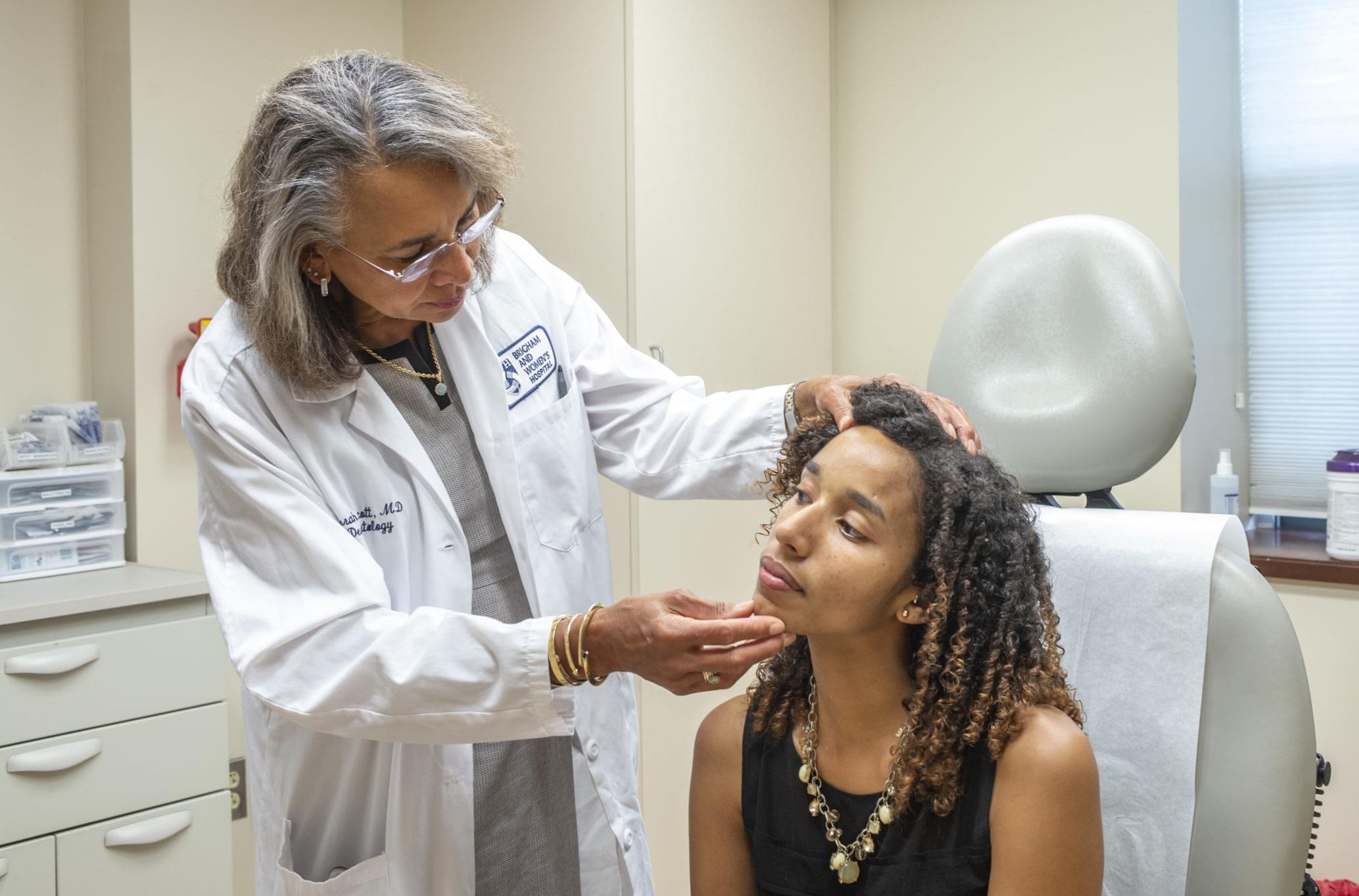
Skin conditions can affect people differently based on their skin color. For example, eczema is a rash that typically appears red and scaly on lighter skin but may look either darker or lighter on darker skin. Topical steroids are often used to treat eczema on lighter skin, but these medications can cause unintentional skin lightening on darker skin if the dosage is too high or if they are used for too long.
At the Brigham, the Skin of Color Dermatology Program pays special attention to the skincare needs of patients of color. The program has offered individualized, culturally sensitive care for patients with dark skin for more than 10 years.
According to Deborah A. Scott, MD, director of the program, “Skin disorders are more than cosmetic issues. These disorders have such a huge impact on people, and we all need to be more sensitive to that fact. Dermatologists who understand different skin types know how to treat them effectively and safely.”











